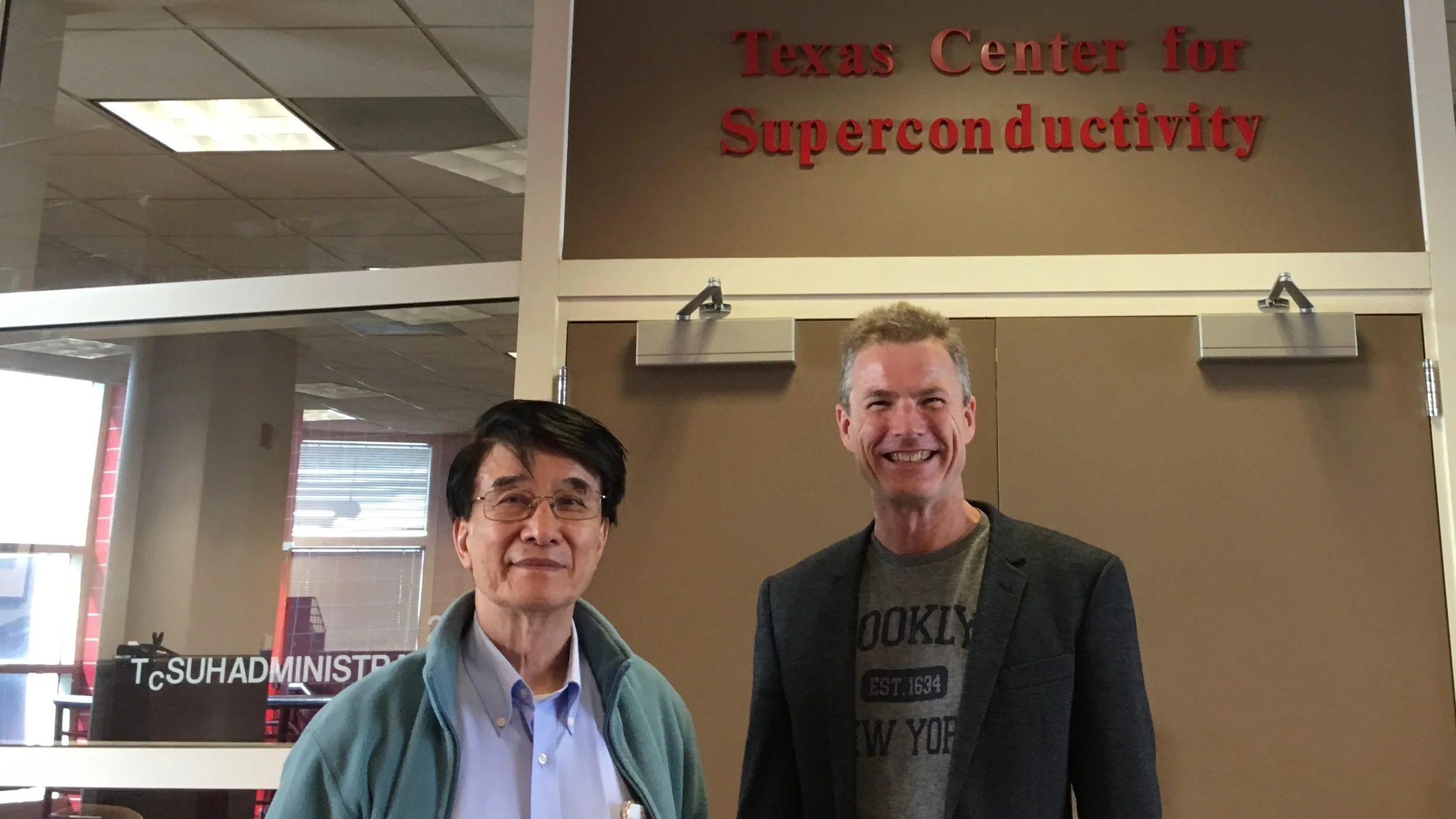THE FUTURE OF SUPERCONDUCTORS — WITH PAUL CHU
PAUL CHU IS STRIVING TO SAVE THE WORLD … AGAIN
May 3 2019—Last week I was lucky enough to spend time with Paul Chu, the God of superconductors and an unsung hero on this planet (he will cringe when hears that!) Around 1987, after almost twenty years of dedicated research, Paul helped raise the temperature at which superconductors operate—by a lot. Smashed it. He has continued to raise the temperatures ever since, sometimes lagging sometimes leapfrogging other scientists. This matters because superconductors conduct electricity with zero resistance and are vital to the workings of such things as MRI machines, efficient wind turbines, mag-lev trains and more, but only if they are ridiculously cold. Each step up in temperature makes them more practical and opens up new industrial possibilities, some with profound implications for our future. One example: when I talk to people building the fusion power plants that will change *everything* it is Paul’s work which has made the giant magnets possible which make their work possible. Easy to see why his CV bulges with honours, including the National Medal of Science he received at the white house.
I visited in full fanboy mode, of course, and with my usual agenda: Learn more about the future. Collect insights and stories I can bring to the stage.
The bigger lessons were those I received in humbleness, good-humour, and wisdom.
I arrived to find a bunch of Paul’s colleagues in a corridor, laughing like kids as they played with rig to demonstrate the Meissner effect (think “mini mag-lev” with a levitating plate big enough to stand on). Everyone was taking turns, levitating and spinning like a top. They insisted I have a turn. Then Paul appeared and stepped aboard, cracking jokes about his insurance cover and whether he should sign a waiver. Somewhere in all this we were introduced. I’m guessing people like working with this guy ... innovation culture, anyone?
Our conversation was wide-ranging: from the nature of happiness and ‘wealth’ in modern society, through the ups and downs of Sino-US relations (as a Chinese-American, Paul is especially philosophical on this subject), societal and cultural influences on innovation, the importance of honesty in the research community, and the trade-offs between aiming for perfection or practicality when taking science to the commercial world.
His progress continues to come via a combination of following pathways, Edison-like brute force experimentation, and human intuition. There is a lot of intuition! He recalls saying to his wife, just before his big breakthrough, ‘Give me three months, I think I’m onto something …’
Somewhere in this we managed to talk futures:
The 1,000 km/hr-capable trains being developed now in China. Think mag-levs inside vacuum tubes, and super low-energy to run once installed (p.s. don’t mention them to Elon!)
The grand transmission promise of superconductors, shunting electricity around continents with no loss, currently not so exciting to the bean-counters because of the refrigeration plants and liquid nitrogen and so on BUT, if you used a less perfect wire (cheaper) and ran liquid hydrogen down the jacket, thus combining 2 forms of energy transmission in 1 …
And the golden goal! Getting superconductors close to room temperature!
On this, Paul has ideas, new pathways he is exploring. He is optimistic. You know it from his body language and the twinkle in his eye. At the same time he is quick to emphasize there are no guarantees. If it happens in his lifetime, it happens. If it doesn’t, it doesn’t. Whatever and whenever, it IS worth striving for.
Evidently. Five decades, and no plans to stop anytime soon.
Thank you, Paul Chu. What a privilege.

